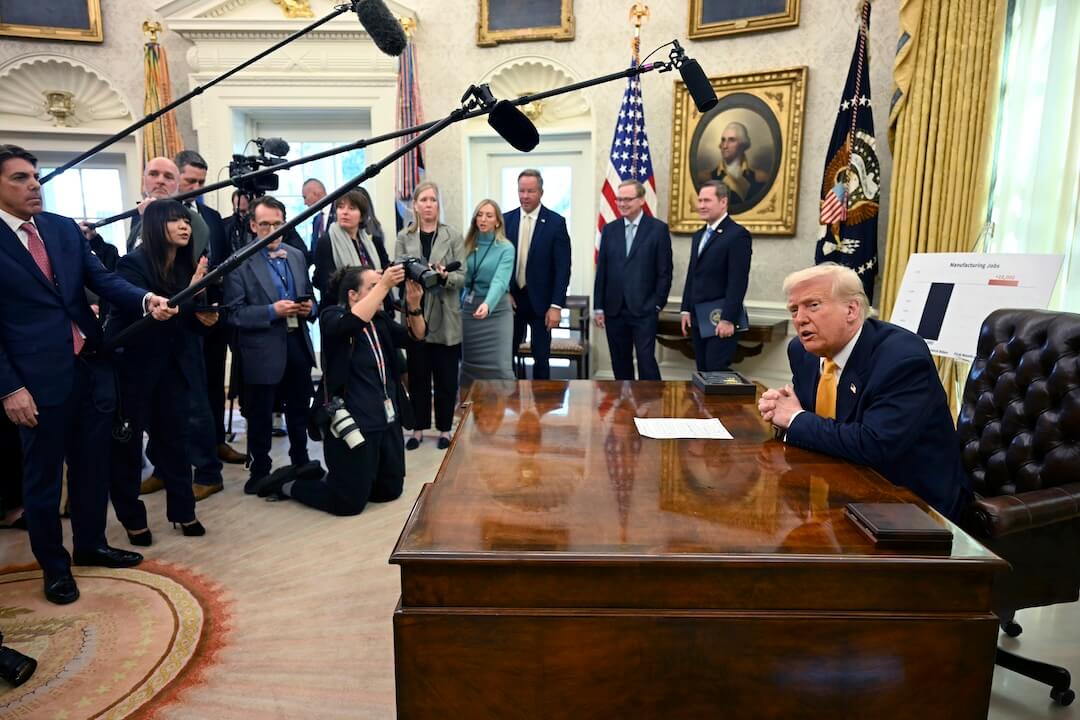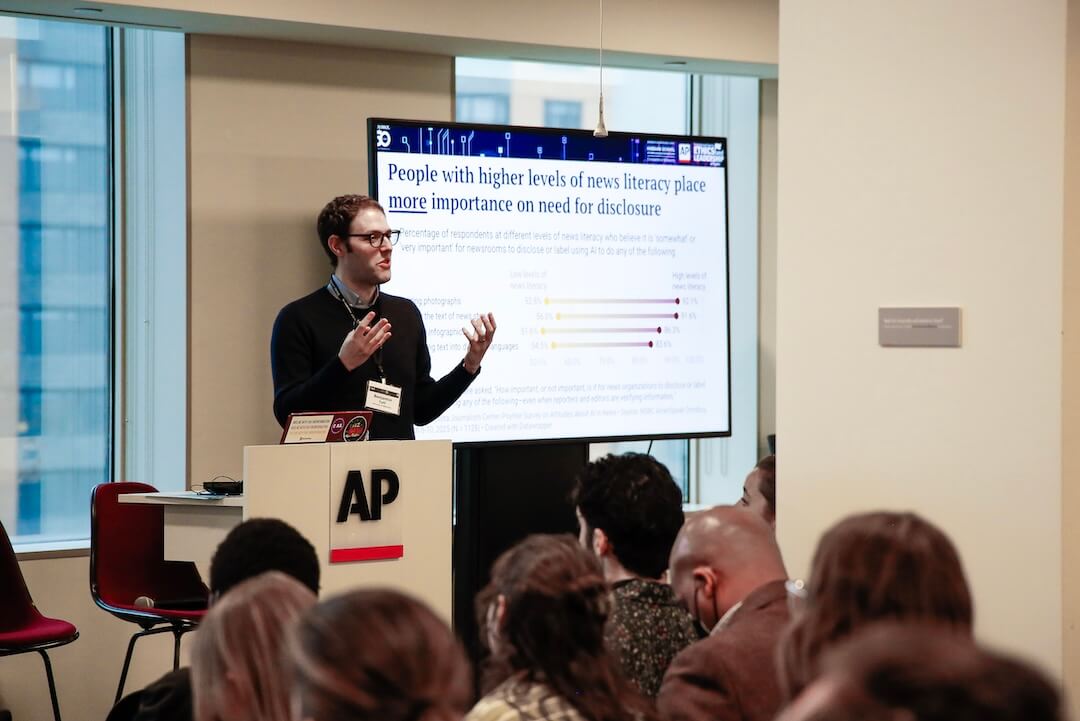When he first started his career as a journalist, Kevin Vaughan carefully clipped each story, scribbled the date on top and tucked it into a file folder. That turned, eventually, to grabbing the day’s paper and tossing it in a closet.
“It was like that for a long, long time.”
By the time Vaughan started working at the Rocky Mountain News, the paper had an electronic archive. You couldn’t see just how the story appeared that day, but you could read the text. And Vaughan saved less and less. He grabbed copies of his coverage of the Columbine shootings. He saved big packages. And he assumed his work would always exist online.
But when the Rocky Mountain News closed in 2009, its website also eventually crumbled away. With it went Vaughan’s Pulitzer-nominated series, “The Crossing.” The 34-part multimedia series debuted in 2007 and told the story of a 1961 train and school bus crash that killed 20 children.
In August, eight years after it was first published and six years after it disappeared, Vaughan reintroduced the series in its original format to the Web.
You might think of what he did as recreating a building. Yes, the terrain had changed. And so had the tools used to build it. But it was possible because Vaughan had the blueprints.
ROCK VS. PAPER
Thousands of years ago, we told stories by banging on rocks.
“That was fairly permanent,” said Edward McCain, digital curator of journalism and founder of Dodging the Memory Hole at the Donald W. Reynolds Journalism Institute and University of Missouri Libraries’ Journalism Digital News Archive.
But those petroglyphs weren’t super accessible.
“You either had to go to where the rock was, or you had to be really strong and carry the rock around with you.”
But things got easier, first with clay tablets, then with ink on paper.
“There’s this gradual trend toward more and more access, and of course electronic media provides the easiest and cheapest access to information that we’ve ever had on the planet,” McCain said. “But it’s also the most easily lost. We’ve always had this tradeoff between permanence and accessibility.”
With print, we’ve developed systems for preservation.
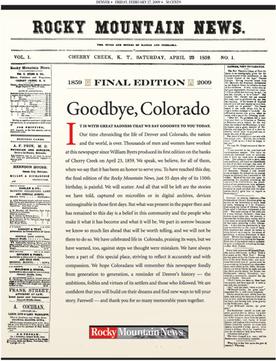
The Rocky Mountain News’ final edition, from JDNA’s ‘How the Denver Public Library ended up owning the Rocky Mountain News archive’
“But with electronic stuff, you put something on a hard drive and you try to come back to it five years later,” he said.
If the drive still works, does the software? Ten years later, can you find hardware that will work? Unless you’ve done something proactive to preserve your digital work, you can pretty much bet it will disappear, he said.
Right now, McCain and Dorothy Carner, MU’s head of journalism libraries, are working toward getting personal digital archiving into MU’s journalism curriculum.
“Unfortunately, the current content management systems and other systems that we’re using every day to create our stories and to distribute them, they’re not at all designed to preserve that content, so we’re finding that online content is extremely ephemeral.”
I checked in with Poynter innovation columnist Melody Kramer to see if she knew of any ways that journalists are saving their work.
“I don’t know of any way to do this personally, but I think the person who creates that will be very smart,” she said in an email. “It’s certainly worth people thinking about their archives because it’s not necessarily true that publications will – as evidenced by the number of publications that have recently shut down and taken their archives offline.”
Digital clearly still has great benefits, McCain said, even thought we’re not yet to the point where systems are designed for more permanent access to what we put on the Web.
“So we don’t have to carry rocks around anymore,” he said, “but our stuff gets lost really, really easily.”
REBUILDING
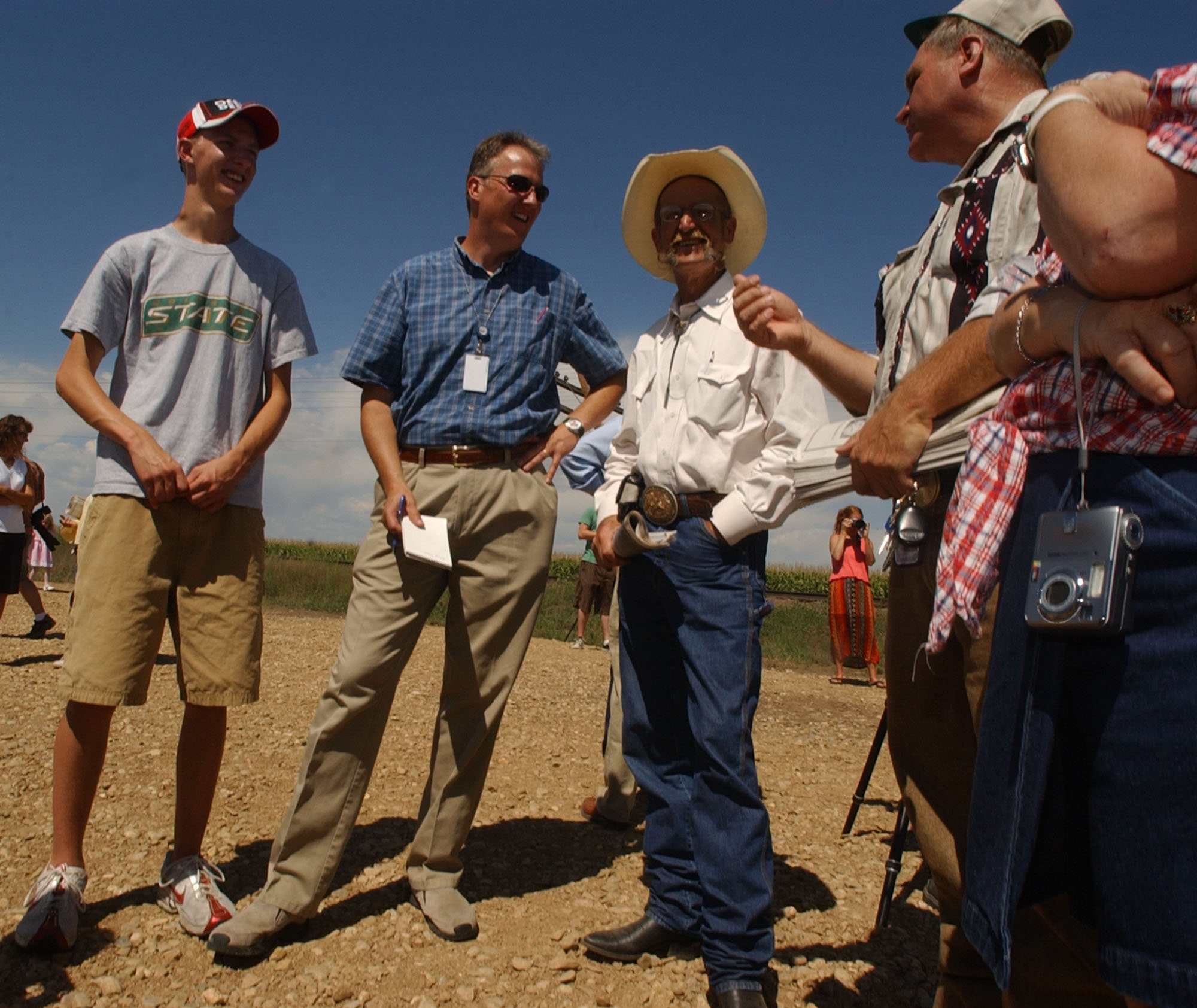
Kevin Vaughan stands between his son Forrest, far left, and Bruce Ford, a survivor of the crash. Frank Munson, who had two brothers and a sister on the bus, stands to the right. (Photo by Rich Abrahamson)
Vaughan had those blueprints, the code, thanks to technology. Or crappy technology. Shortly after the series came out, he started getting requests to make presentations. In 2007, access to WiFi wasn’t a given. Vaughan asked the tech people at The Rocky Mountain News if there was a way he could share the series remotely.
“And so somebody made me a DVD.”
Vaughan kept four copies. When the paper closed in 2009, he took them with him. He kept three in his home office and another at his desk at The Denver Post, where he worked after Rocky Mountain News closed, just in case his house burned down.
But Vaughan didn’t really imagine the Rocky Mountain News’ site itself would disappear. One week a link didn’t work. The next week more. In the spring or summer of 2009, he got an email from someone who was trying to find the series online.
He went to the site, “and I looked, and I clicked, and I couldn’t find it.”
At The Denver Post, Vaughan showed coworkers his DVD and asked if there was any way to rebuild the presentation on the Web. They poked around and came back to him with good news. The series was built using HTML4, and the DVD had all the code. The building was gone, but the blueprints remained.
Vaughan spent the next several years trying to get the rights to republish “The Crossing.” The Rocky Mountain News left their archives to the Denver Public Library’s Western History and Genealogy Department. Hammering out a legal agreement with the city of Denver took years. Vaughan wanted to republish the series as it originally appeared, and he wanted it under the Rocky Mountain News’ masthead.
When he finally had that permission, he just needed someone to help him rebuild. He reached out to former colleagues and tried to figure out what it would cost to hire someone. In the summer of 2014, Vaughan’s son Sawyer was home from college on summer break. Sawyer, who was 11 when the series first published, now studies electrical and computer engineering. Vaughan showed him the DVD.
“So he put it in his computer and he was like, oh yeah, we can do this.”
Vaughan bought a URL and the two spent the summer working on it. They continued during winter break and the summer of 2015. In August, the project was finally finished. Adrienne LaFrance wrote about the process for The Atlantic.
For Sawyer, most of the work involved combing through old code and adapting it for a today’s web. In a pre-iPhone 2007, “The Crossing” had been designed as a desktop experience. It also relied heavily on Flash, once-ubiquitous software that is now all but dead. “My role was fixing all of the parts of the website that had broken due to changes in web standards and a change of host,” said Sawyer, now a junior studying electrical engineering and computer science. “The coolest part of the website was the extra content associated with the stories… The problem with the website is that all of this content was accessible to the user via Flash.”
When it was finally finished, Vaughan shared the site with former colleagues, and he wrote to his sources from “The Crossing,” with whom he’s stayed in touch. Getting this thing that lived on paper and online back online again has shown him how differently people still get information, he said.
“I got letters back from a couple of them that were nice letters but were like, I don’t go on the Internet. So for them, the story just lives on on paper.”
DIY
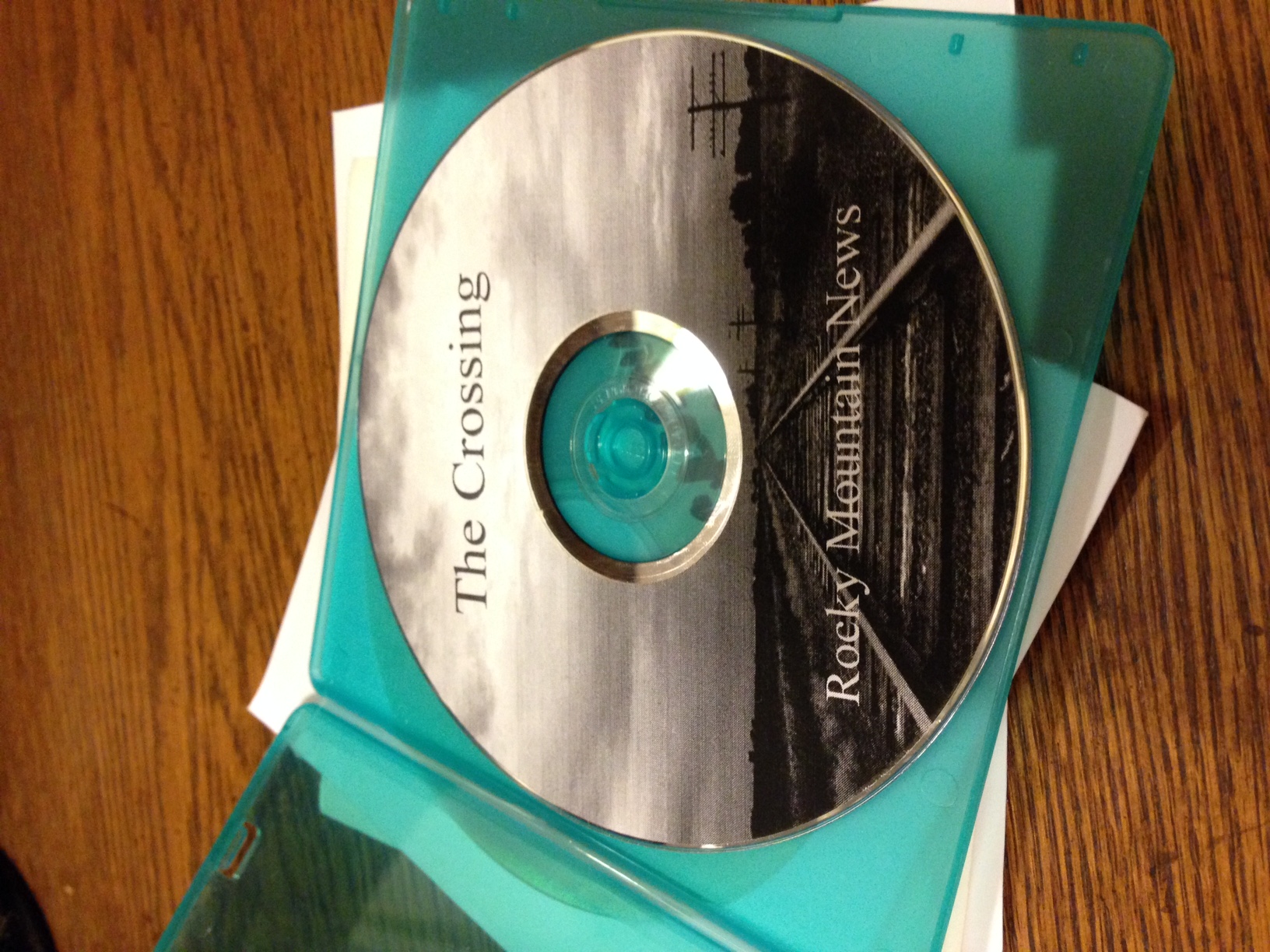
One of Kevin Vaughan’s copies of “The Crossing.” (Photo by Kevin Vaughan)
So what can you do to save your stuff before it falls into the nothing of the Web? McCain has a few suggestions. I’ve organized them into the five Ws and one H to make things a little easier.
1. How? Save your articles as PDFs. This doesn’t help with video, but “at least you will have the text, and you will have the graphic layout of it and you will have captured the URL,” McCain said. “If you have a PDF, there’s a pretty good chance, because it’s an open standard, someone could reengineer a way to open it.”
2. What? Do you have to save everything? Like Vaughan did, curate and pick the stuff that matters to you the most.
3. Where? Archiving is for long-term saving. Backups are more immediate, giving you the ability to get access to something quickly. Some Cloud backup services are a good option, McCain said.
“Those services are using lots of different servers in different geographic locations distributed around the planet, and the chances of them losing something are probably lower than the chances of your set of hard drives crashing.”
4. When? “I would do it immediately.” Don’t waste time, he said. Our industry is an unpredictable one.
5. Why? Your future self needs to have enough information to make sense of what you’ve saved, McCain said. Organize what you have in whatever way works, but just organize it. Then, make notes for yourself so you know what you have and where.
“Make a system that makes sense to you,” McCain said.
6. Who? Who owns the rights to your work? That really depends on the specific arrangement of the publication you work or worked for, said Elsa Ransom, an associate professor of law at Texas Southern University’s Thurgood Marshall School of Law.
Vaughan saved a copy of his project on a DVD, but before putting it back on the Web, he did get permission.
Also, just because a publication closed, that doesn’t mean the terms of copyright do, too, Ransom said.
“Copyright interests don’t necessarily expire.”
ON THE SHELF
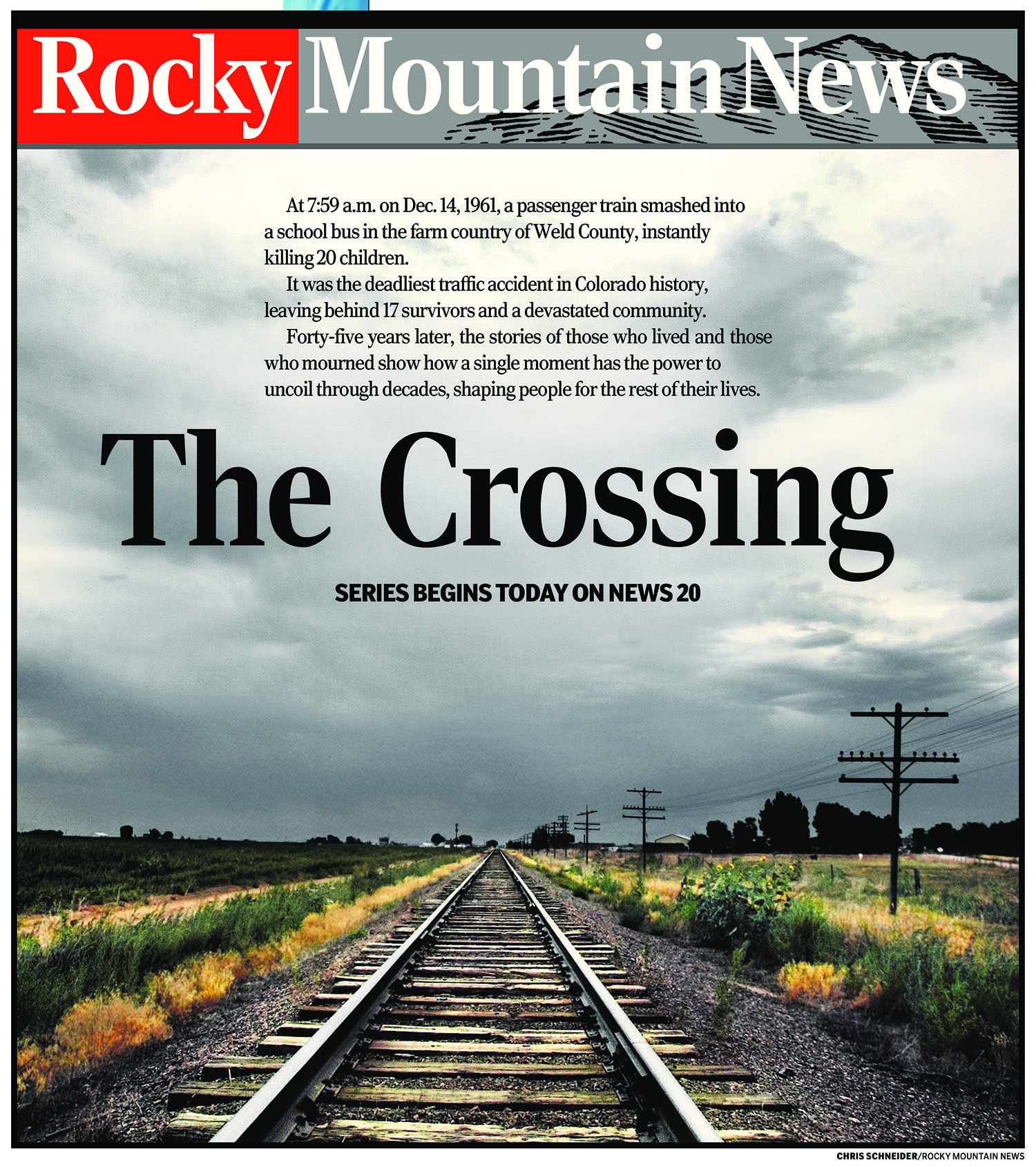
The cover of the first chapter of Rocky Mountain News’ “The Crossing.”
Vaughan, who now works as an investigative reporter for Denver’s KUSA-TV, still has a few hundred issues of the paper version of “The Crossing” on a shelf in his garage. A couple of times a year, he’ll hear from someone who heard about the series and can’t find it anywhere. So he mails them a copy.
Now, he can mail them a link again.
Since we’ve moved online, we’ve built up the technical debt of having to move old content into something that’s currently accessible, McCain said.
“That costs money.”
He’s working on a Sustainability Preservation Pilot Project to see if smaller papers can build systems that can preserve born-digital content while making it easily accessible and marketable.
“If we can find an economic incentive to drive or to attract people to the idea, that has a better chance of flying than just saying well you really oughta do this.”
Of course there’s the human benefit of having an authoritative and accurate record, he said, but for individual reporters, right now saving that work is a personal task.
Vaughan went from saving everything he wrote to just the things that mattered to him the most. He’s still doing that now. And he knows that if he wants to see his work again someday, he’ll have to keep it up.
“I feel like we’re in this very temporary world in a certain sense,” Vaughan said. “The Rocky Mountain News was 150 years old and it folded. People need to be thinking all the time, is this something I want to save the way it is? And if it is, they need to take those steps now.”






